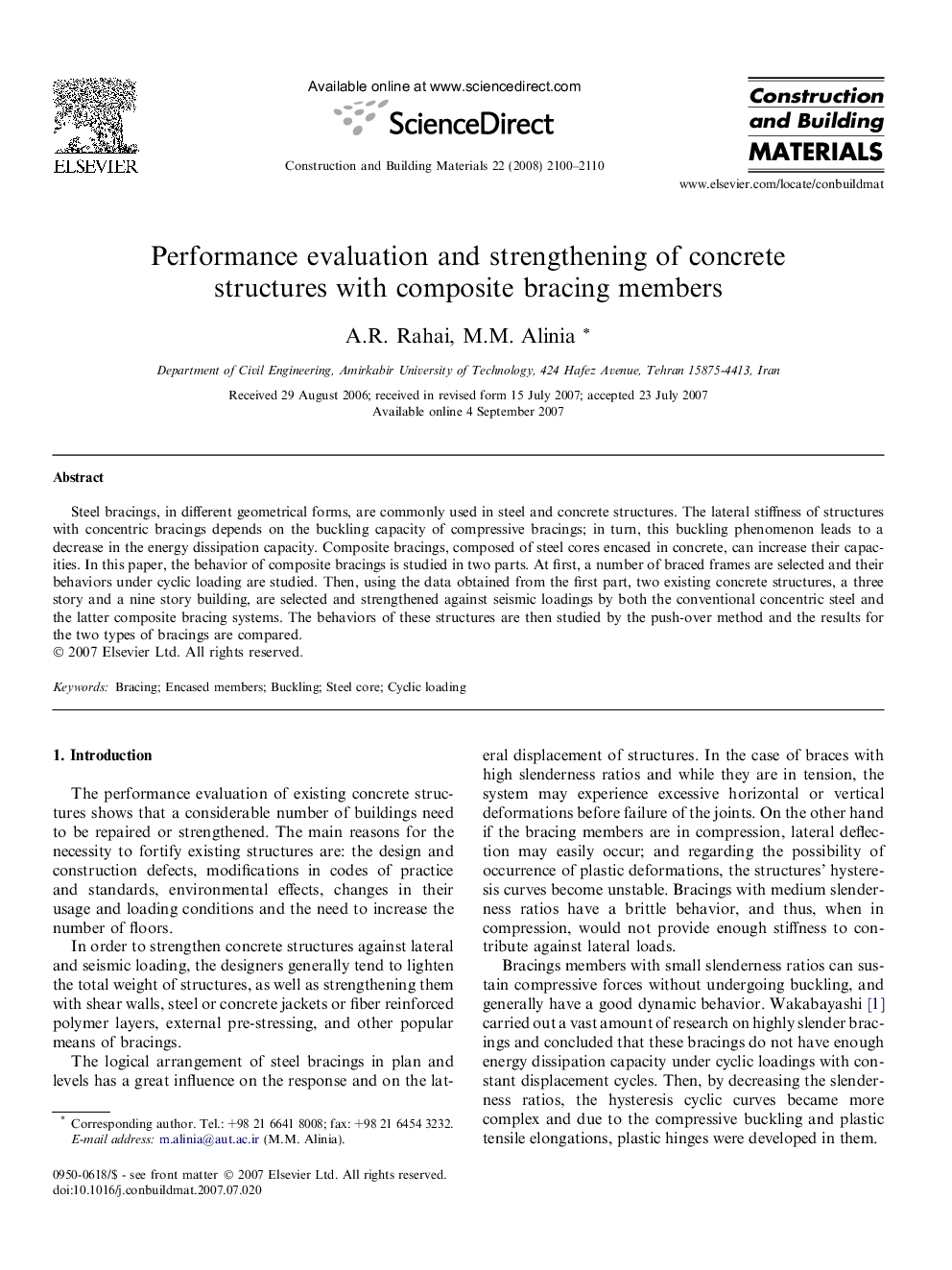| Article ID | Journal | Published Year | Pages | File Type |
|---|---|---|---|---|
| 261124 | Construction and Building Materials | 2008 | 11 Pages |
Steel bracings, in different geometrical forms, are commonly used in steel and concrete structures. The lateral stiffness of structures with concentric bracings depends on the buckling capacity of compressive bracings; in turn, this buckling phenomenon leads to a decrease in the energy dissipation capacity. Composite bracings, composed of steel cores encased in concrete, can increase their capacities. In this paper, the behavior of composite bracings is studied in two parts. At first, a number of braced frames are selected and their behaviors under cyclic loading are studied. Then, using the data obtained from the first part, two existing concrete structures, a three story and a nine story building, are selected and strengthened against seismic loadings by both the conventional concentric steel and the latter composite bracing systems. The behaviors of these structures are then studied by the push-over method and the results for the two types of bracings are compared.
